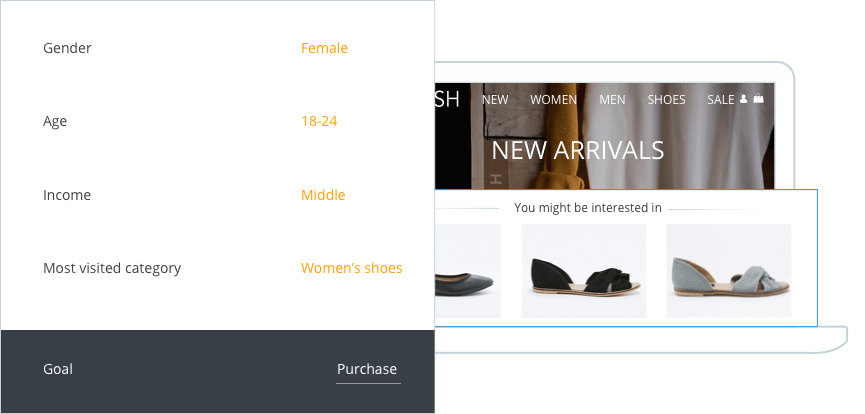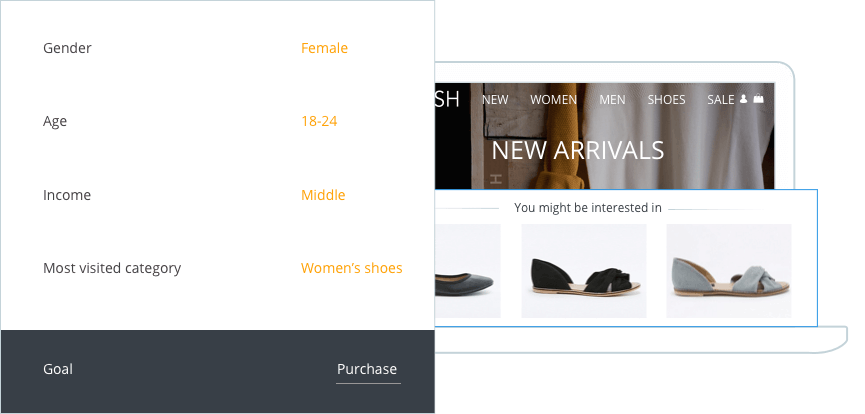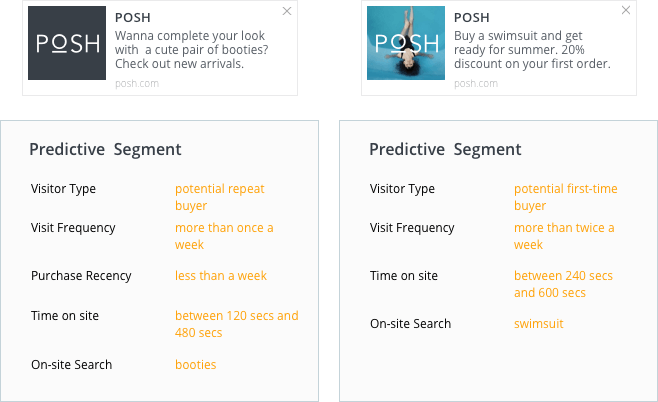The data science behind predictive modeling and recommendation engines
 Srikant Kotapalli
Srikant Kotapalli
Apr 7, 2017
 Srikant Kotapalli
Srikant Kotapalli
Apr 7, 2017
 Srikant Kotapalli
Srikant Kotapalli
Apr 7, 2017
 Srikant Kotapalli
Srikant Kotapalli
Apr 7, 2017
Under the hood: Everything you need to know about personalized experiences
What is a recommendation engine?
How does a recommendation engine work?
Where are recommendations used?
Predictive Modelling is …
How does predictive modelling work?
How are predictive segments leveraged by marketers?
Overall difference in a nutshell
Recommendation engines and predictive modelling technologies are often perceived as similar technologies by marketers. While both are about delivering visitors content they might be interested in, the two technologies work with completely different mechanisms and algorithms. Most enterprises tend to rebrand their recommendation engine technologies as “predictive modelling” but the difference between two is downright.
Recommendations are personalized content delivered to visitors like products, articles, videos, etc. Recommendation engines deliver content based on visitors’ behavioral data offering them relevant content.
Most personalization vendors leverage these technologies in various ways. At Insider, we use two completely different algorithms for recommendation and predictive modelling engines. Insider’s recommendation engine automatically learns and analyses visitor behaviour across web, mobile web and apps. Descriptive data models and collaborative filtering techniques are used to compare one visitor’s behaviour to other visitors’ journeys and historical data to create a list of relevant recommendations.

While there are a number of recommendation engine models, one or two of them are widely used by brands. For instance, certain models track products, articles or pages that are browsed together and based on this data, relevant recommendations are shown. What this means is when you go to a media website and go through certain pages, you’re recommended content which was read by other visitors who have demonstrated similar behaviour within the website. While some of the models deliver products that are usually bought together to increase the AOV of each purchase, other recommendation engines deliver complimentary products to visitors who are about to checkout.

Predictive modelling, on the other hand, focuses on accurately anticipating visitors’ future actions. Predictive modelling engines commonly run on an advanced machine-learning algorithm, tracking actions of visitors across all touchpoints. One visitor’s behaviour is compared to other visitors’ journeys and historical data to make predictions, enabling marketers to act on ready-to-use segments based on future behaviours of their visitors.
Insider’s predictive modelling engine runs on an advanced machine-learning algorithm, tracking actions of visitors across all touchpoints. The algorithm for predictive segmentation uses thousands of signals within thousands of users’ behaviours to carve out predictive models. In predictive modelling one visitor’s behaviour is compared to other visitors’ journeys and historical data to make predictions, creating ready to use predictive segments based on future behaviour of visitors.
Predictive segments help marketers take actions based on variables like likelihood to purchase, customer lifetime value, interest-based segmentation, income prediction and customer life cycle status prediction. For instance, most commonly used predictive model within Insider’s platform is the likelihood to purchase algorithm where a visitor’s likelihood to achieve a predefined goal in the next 7 days is predicted and visitors are grouped into segments based on their likelihood to purchase. At Insider’s another predictive model, customer lifetime value is predicted as standard, high and VIP based on a visitor’s realization of a predefined goal such as completing a purchase or reading a specific number of articles. Based on these predictive variables marketers can make data-backed decisions and deliver truly personalized experiences to each visitor.

Other than being a highly effective personalization solution, at Insider we use predictive marketing technologies to help marketers increase the effectiveness of their ad spend, with its capability to be used in third party paid ad channels. Using predictive segments in ad channels like Google Adwords, Facebook, etc, marketers deliver ads to audiences that will respond to them most effectively, thus increasing the efficiency of their spend.

Delivering thoroughly personalized experiences requires a 360º visitor profile and creating a highly detailed customer profile requires robust data and the right technologies to make the best use of your data ocean. Recommendation and predictive modelling engines are two different technologies helping marketers achieve this ultimate goal of delivering unique and favorable experiences to each and every user at different respects. Recommendation engines feed on historical data to deliver relevant products/content to visitors. Predictive modelling makes predictions about future behaviour of customers, carrying customer experiences to the next level. Predictive marketing technologies help marketers completely transform their digital marketing operations, from online conversions to increasing ad spend efficiency. Recommendation engines work as a quick solution to increase conversions.

Written by
Srikant Kotapalli
Srikant is a seasoned product marketing leader with 15+ years of experience in building and marketing SaaS products. As VP of Product Marketing at Insider, Srikant is responsible for Insider's product positioning, GTM and analyst relations. When not working on product marketing projects, Srikant loves exploring the design and engineering of things